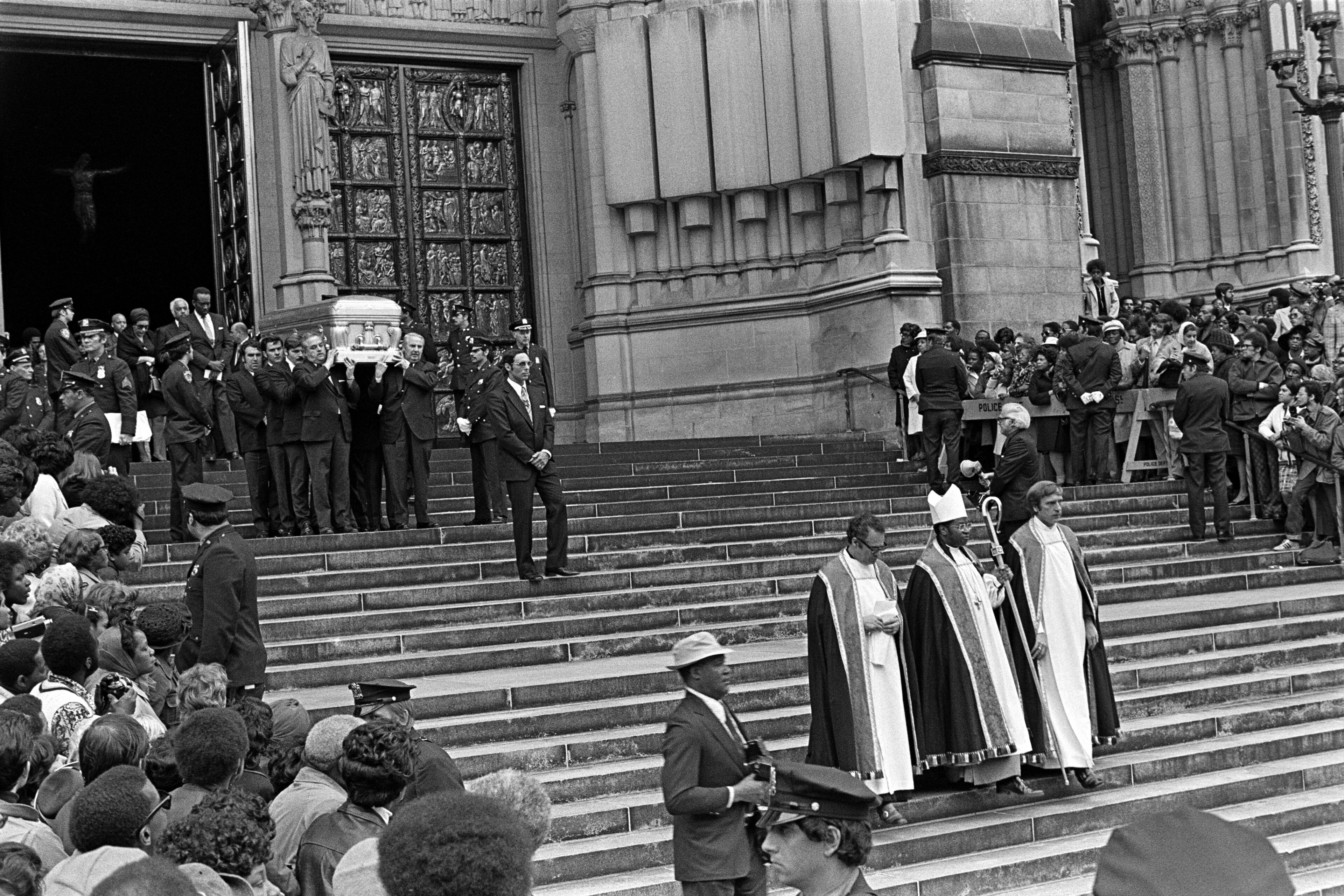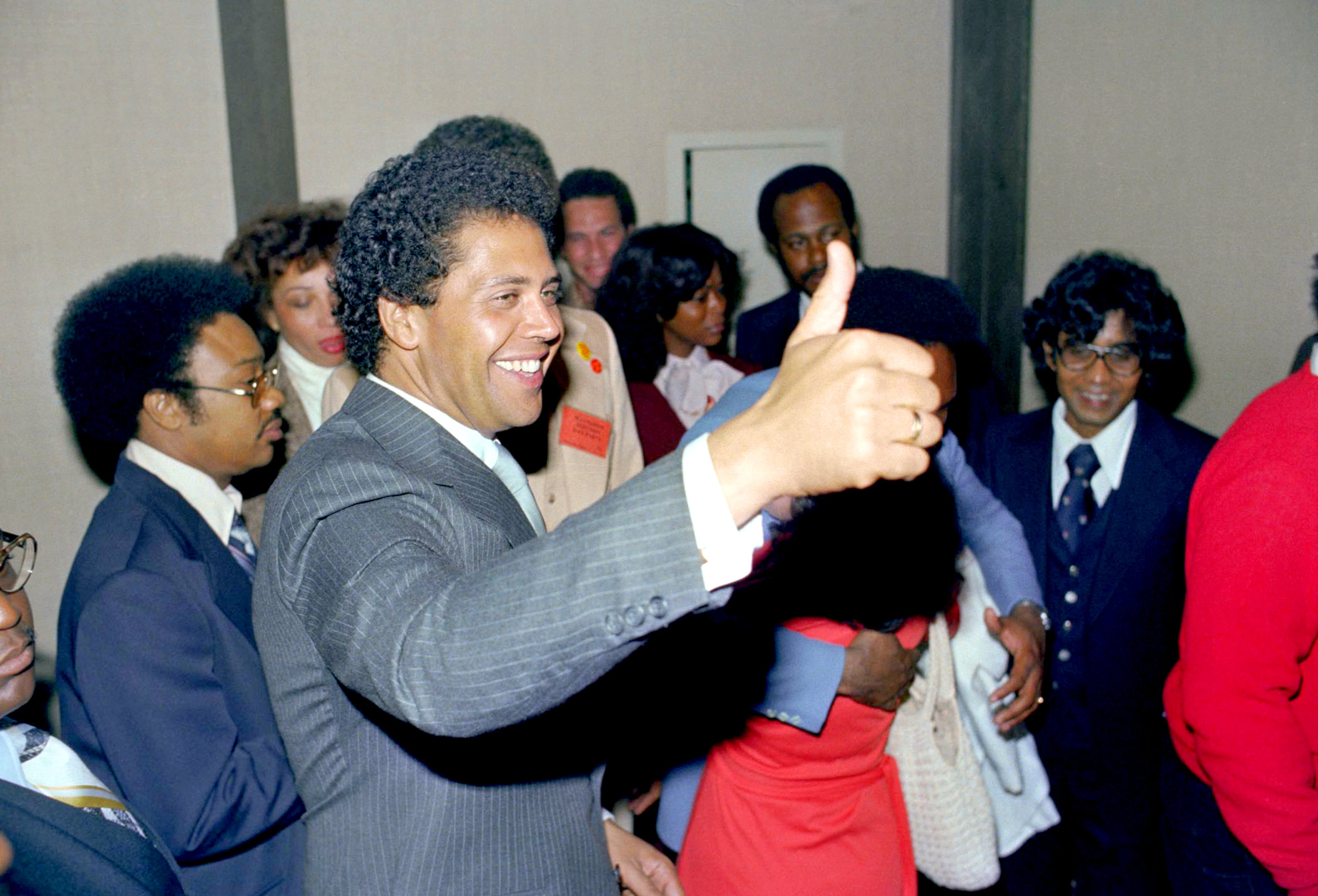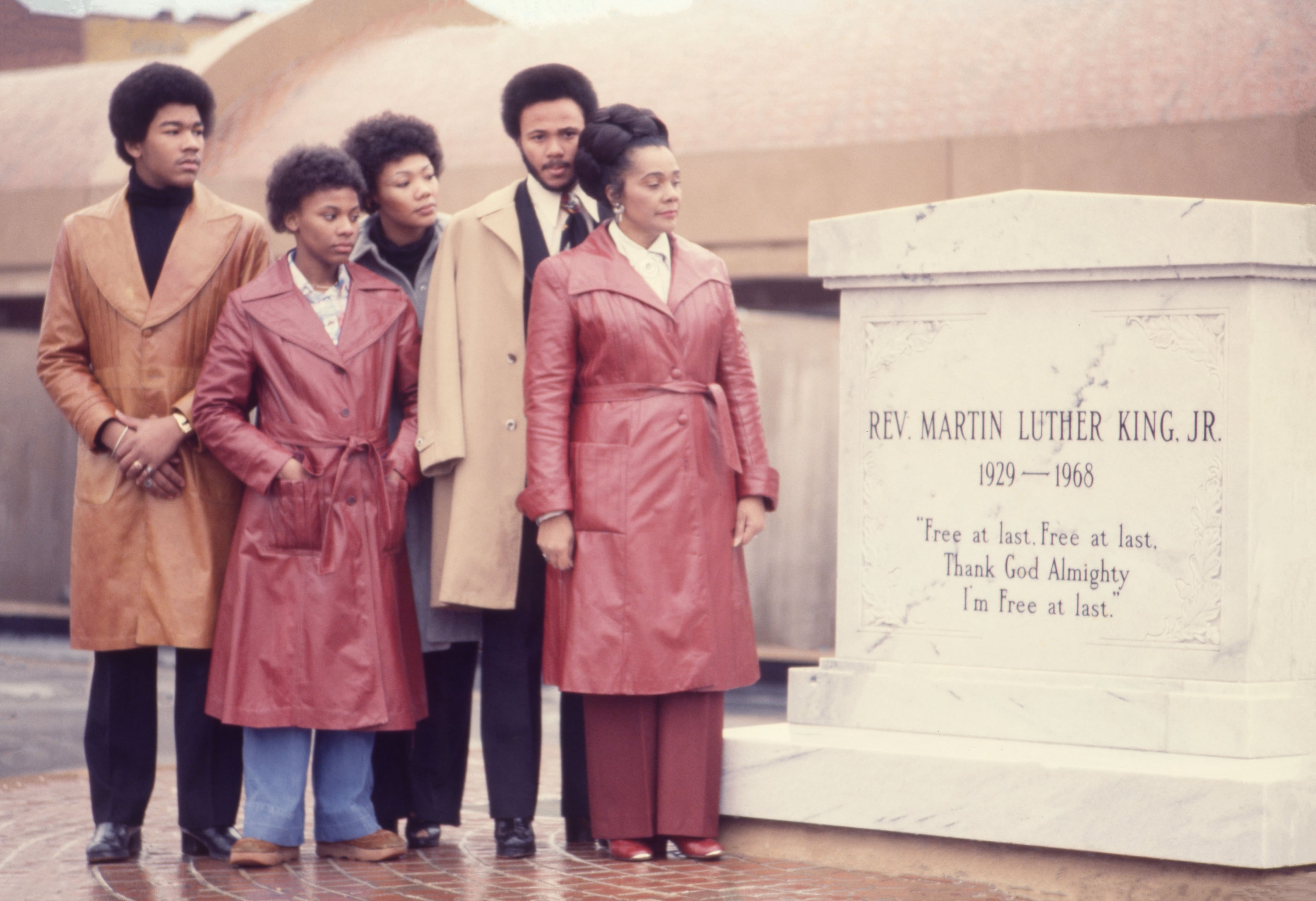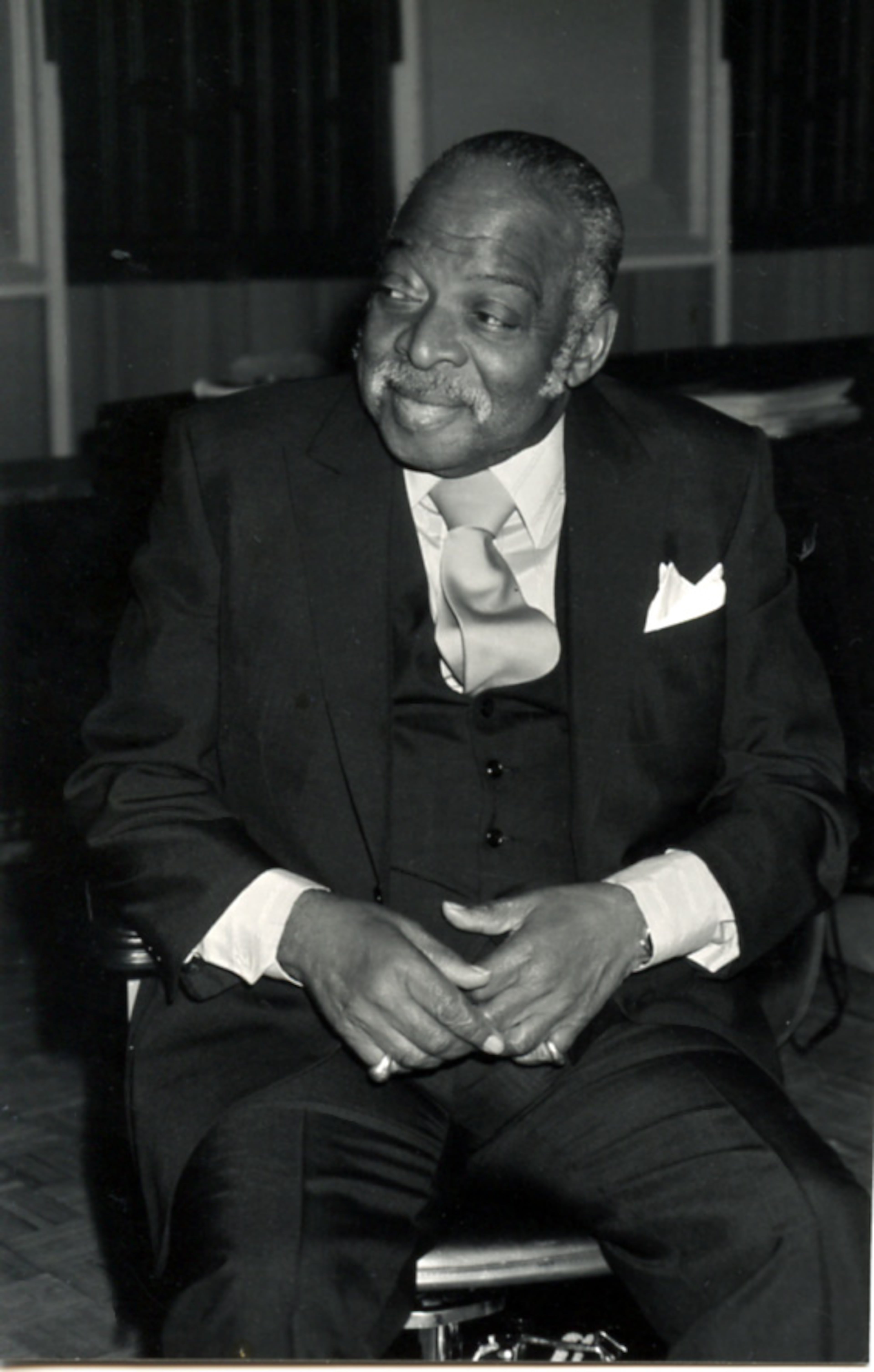Grant helps Emory preserve Jim Alexander’s photo archive of Black Atlanta
The bet was simple: roll a 10 and win $10.
It was 1953, and Jim Alexander was a 17-year-old seaman recruit, killing time in boot camp shooting dice for nickels and dimes. He rolled a 10. One of his shipmates pushed it further — another $10 said he couldn’t do it again.
Alexander scooped the dice, tossed, and hit another 10.
“I said, ‘Give me my money,’” Alexander remembers.
The man disappeared into the barracks and returned with a small yellow box. Inside was a Kodak Brownie Hawkeye.
“Here,” the sailor told him. “Hold this camera until payday.”
Payday came and went. The man, who only earned $10 a week, told Alexander to keep the camera.
“I started taking pictures of the guys and selling them to them for 50 cents,” Alexander said. “That is how it all started.”
That dice game in Maryland set Alexander on a course that would define not only his life, but how generations would come to see Black life in America.
Today, thousands of Jim Alexander’s photographs — prints, negatives, slides and contact sheets documenting more than 60 years of Black life, particularly in Atlanta — are housed at Emory University’s Stuart A. Rose Manuscript, Archives, and Rare Book Library.
The collection, which first arrived at Emory in 2014, spans from roughly 1960 to 2022. With the support of a newly announced three-year, $280,000 Getty Foundation grant, the archive is being processed, preserved and cataloged so future generations can access the faces, protests and celebrations Alexander spent decades documenting.
N’Kosi Oates, curator of African American collections at Rose Library, said the grant will also enhance the collection’s catalog with more detailed descriptions, making it easier for researchers and instructors to locate materials.
Although the collection offers a rich visual history of Atlanta’s 20th-century arts and culture — particularly during the Black Arts Movement of the 1960s and 1970s — much of it remains unprocessed. Unfinished portions include images from the National Black Arts Festival, the Atlanta Jazz Festival, and the Neighborhood Arts Center, a hub of Atlanta’s Black arts movement. The new grant will help close that gap.
The project has two main components. First, a visiting archivist will process the materials to improve accessibility. Second, Emory will create an oral history with Alexander.
“The Jim Alexander photograph collection is such a gift to Emory University and the world,” said Clinton Fluker, senior director of culture, community and partner engagement for Emory Libraries and the Michael C. Carlos Museum.
Fluker helped bring parts of the collection to Emory.
“Alexander’s photographs capture moments in history that span decades and tell us stories about the African American experience in this country that only a master can produce,” Fluker said.
Alexander, with his slim, slight frame and whisper of a voice has always called himself a “participant observer.”
His camera has been there for civil rights marches, jazz clubs, political rallies, and the quiet, ordinary rhythms of Black families and communities.
“My focus has been art and social justice and Black culture,” Alexander said. “I wasn’t going to shoot just sports and crime, which is what you see in a lot of coverage. I wanted to shoot everyday Black people, our whole culture.”
That conviction sharpened after the assassination of Martin Luther King Jr. in 1968, the same year he got a degree in commercial photography from the New York Institute of Photography.
Alexander told his friend and mentor Gordon Parks about his plan to spend the next decade documenting Black life to “see if we’re free.”
Alexander remembers the legendary photographer taking a long drag from his pipe, looking him in the eyes, and giving both encouragement and a warning.
“Well, James, it seems like you have a plan,” Parks said. “But your ass is gonna starve. Nobody’s gonna pay you to just run around shooting what you want to shoot.”
Alexander pushed forward anyway. His degree in commercial photography gave him the credentials to teach, but his purpose was always documentary work.
“I never shot with selling in mind,” he said. “It was about the work.”
Raised in Waldwick, New Jersey, Alexander was the son of an auto mechanic and a domestic worker. He wasn’t much of a student, but he loved reading and dreamed of going into the Navy.
After his discharge in 1956, he bounced around — managing a newspaper delivery service, detailing cars, running a pool hall — while keeping scrapbooks of the pictures he had taken in uniform. He didn’t realize they would someday matter.
In the 1960s, he gave up drinking, got serious about photography again, and immersed himself in the cultural movements of New York and New Jersey. He joined the Congress of African People, worked alongside poet and activist Amiri Baraka, and helped form the National Black Media Coalition to fight discriminatory practices in radio and television.
His work took him into academic spaces as well. Yale University hired him in the 1970s to teach photography and document Black environmental studies, and he studied communications psychology at the New School.

At Duke Ellington’s funeral in 1974, he shimmied up a fire pole to get a better angle, shot for hours until his legs went numb, and had to be helped down by two police officers. The photographs from that day remain among his most prized.
Alexander moved to Atlanta in 1976 after meeting Mayor Maynard Jackson at a Black political conference. At the time, as the city’s first Black mayor, Jackson was building what became known as a Black Mecca — a haven for Black business, education, politics, culture and the arts. He encouraged Alexander to bring his camera, his teaching, and his organizing spirit to Atlanta.

Alexander took a job with the Federation of Southern Cooperatives, and in 1977 became photographer-in-residence at the Neighborhood Arts Center, documenting visits by Romare Bearden and mentoring young artists who would shape Atlanta’s future as a cultural capital.
Susan Ross, a local photographer, calls Alexander “an Atlanta treasure.” Ross, herself recognized as one of the city’s leading chroniclers of Black life, credits Alexander — who curated her first photo exhibit — as a key mentor.
“Jim has not only documented nearly a century of social justice work in this country, but he has covered many of the important events of Atlanta and the Southeast,” said Ross, who has collaborated with Alexander on three major exhibits over the past three years. “We are grateful for his tutelage, artistry and legacy.”
On Wednesday, Alexander returned to the Rose Library to revisit his work. In a conference room Oates, wearing white gloves, had arranged several of Alexander’s most iconic photographs on a long table.
“The Rose Library has a very robust collecting area regarding African Americans in the arts, ranging from theater and playwrights to literature and writers to photography and artists,” Oates said. “Jim Alexander’s collection ranks among the top for scope and scale.”
Alexander’s work now sits at Emory alongside the collections and papers of artists and civil rights leaders like Pearl Cleage, Benny Andrews, John Biggers, Mildred Thompson, Camille Billops, Jim Hatch, Alice Walker, Valerie Boyd, Tina McElroy Ansa and C.T. Vivian.
Music has always been one of Alexander’s great loves, and many of the images on display reflected that passion: James Brown, Mahalia Jackson, Eartha Kitt, and Gil Scott-Heron all stared back from the prints. Other photographs captured political figures such as Jesse Jackson, Andrew Young, and Barack Obama.
His lens also turned to everyday life — children playing in the streets, the King family in prayer, and protesters marching for justice.

Still sharp at 90, he could glance at nearly any photograph, identify everyone in the frame, and recall the year and place it was taken.
Among his favorites is a candid of Count Basie in an unlikely setting: the men’s room of a Buckhead school in 1981. Just minutes before a fundraiser performance, Basie was freshening up when Alexander asked for a picture.
Basie grinned. “Well, c’mon, ’cause I gotta get out on stage.”

“Most of the time, I don’t ask,” Alexander said. “If you see a shot, you take it. I want to capture people creating their art.”
Alexander’s work has been featured in more than 60 exhibitions, including shows at Emory’s Woodruff Library, Atlanta University Center, and Atlanta City Hall.
His historical images were exhibited in four Atlanta locations in June and July, including The Sun ATL Gallery and the Fulton County Central Library.
Most recently, his work is part of “Hold the Line 3″ at the Path Museum, an exhibition highlighting 50 Black male artists in tribute to Black women.
At 90, health has forced him to take it easy — “I’ve been told I better slow down,” he admits — but Alexander remains present, showing up at community events and mentoring when he can.
Just last weekend, he quietly slipped into the first anniversary celebration of The Tenth, a salon-style social club in Atlanta, to photograph the evening’s special guest, A’Lelia Bundles, who was there to discuss her new biography, “Joy Goddess: A’Lelia Walker and the Harlem Renaissance.”
Adjusting to the times, he didn’t carry a Kodak — he shot with his iPhone.
“I’m a people person,” he said. “I’ve always been involved with people.”
But if you’ve ever seen Jim Alexander around Atlanta, what you remember most — aside from the camera slung across his shoulder — is the beret. Usually cocked toward his right ear.
“In 1953, my mom passed,” he said. “At the funeral, I felt awkward without a hat. My dad offered a fedora, but I didn’t like it.”
Alexander said his sister went to a dry goods store and picked him up a black beret.
“I wore it, and people said how sharp I looked,” Alexander said. “I’ve worn berets ever since — since 1953.”
Mostly black, sometimes blue, brown, raspberry or tan — but always part of the man who turned a dice game into a seven-decade mission to make sure Black life was seen.
